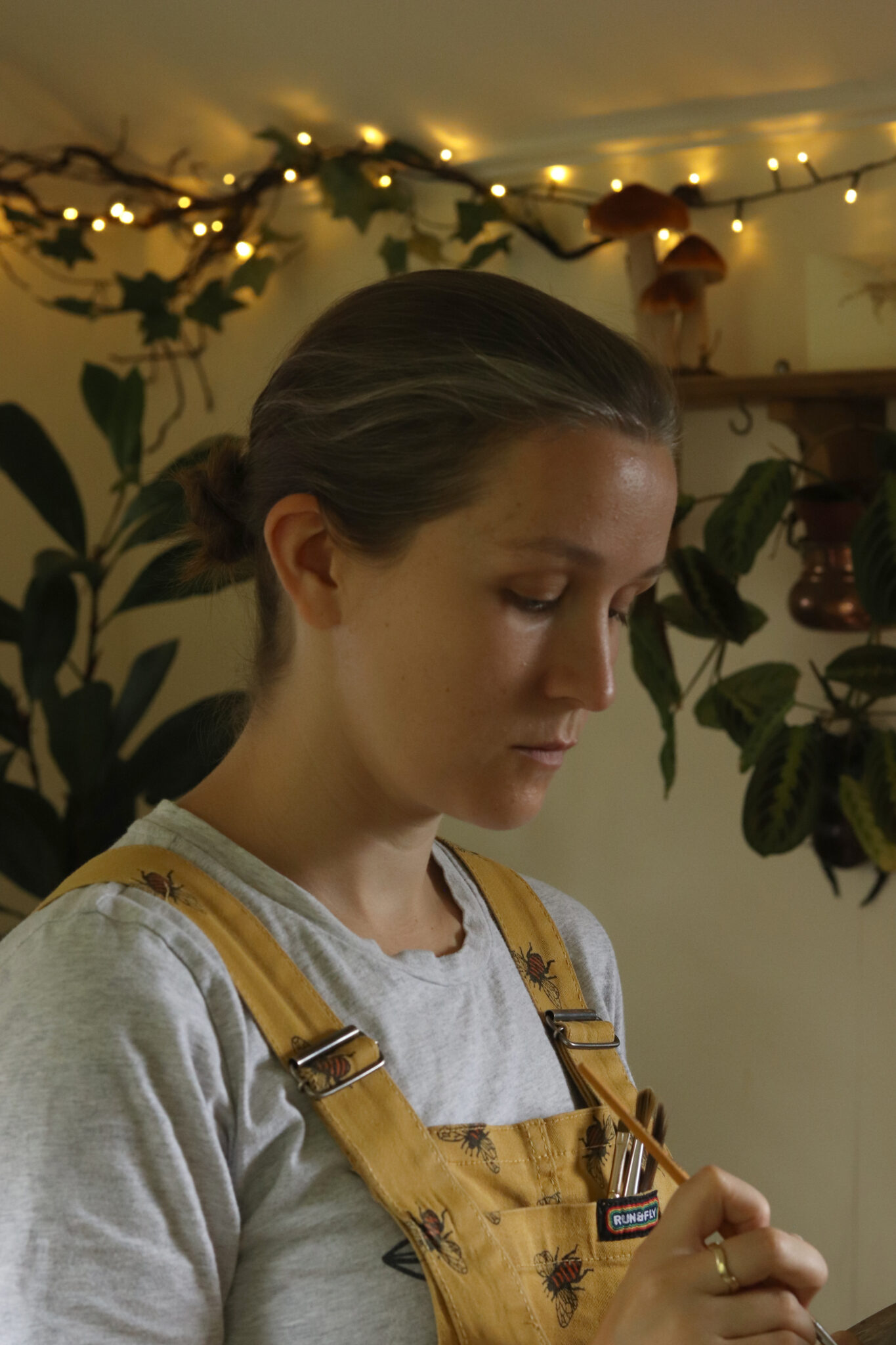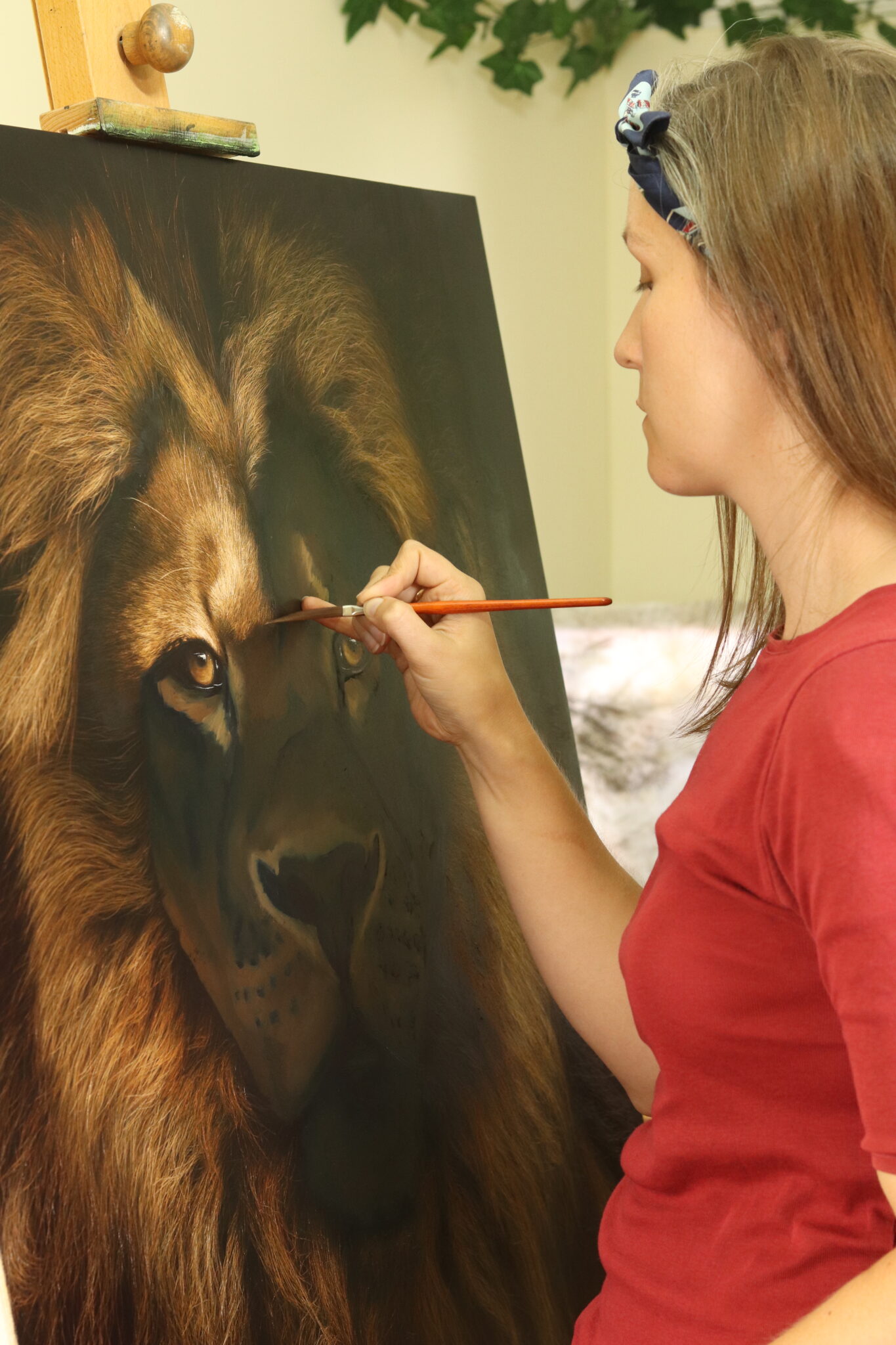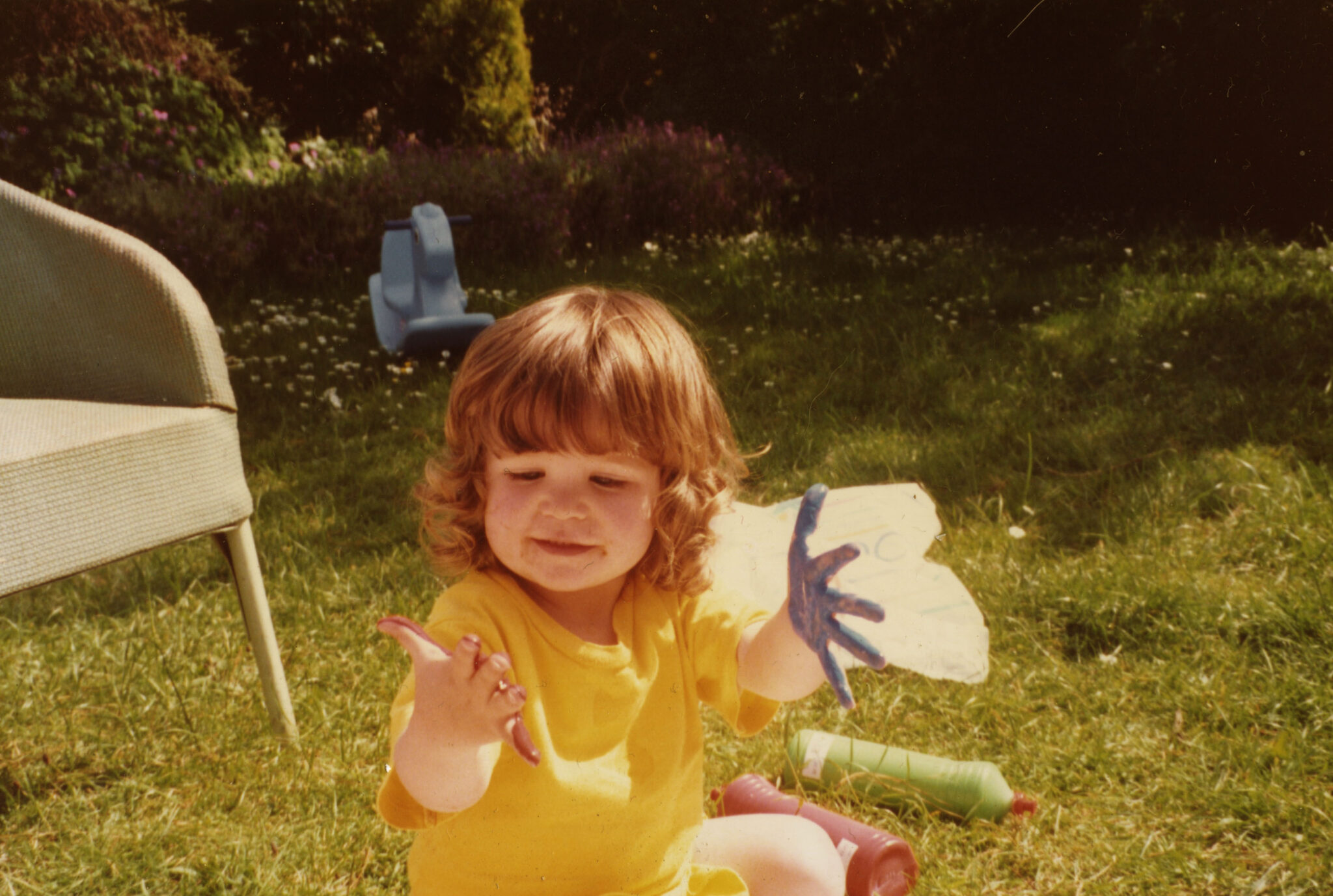Wildlife Artist
My Journey into Realistic Wildlife Art
My first experience of professional wildlife art was a book by Christophe Drochon. Nothing had ever inspired me the way his work did, it was such beautiful and realistic art. I couldn’t begin to work out how he had achieved it, but I knew instantly this was where I belonged.
Choosing to leave further education at 17, was a difficult decision. But I was struggling to find a course that would teach me what I wanted to learn. I already knew exactly what I wanted to do, and didn’t want to be limited by what resources were available / affordable to me. With one year’s worth of formal art education under my belt, as well as a childhood built on creativity, I decided to learn by doing.
Starting full-time at such a young age allowed me to grow quickly. Learning as much as possible, seeking advice and building a support system of professional creatives. They helped with framing, printing, teething problems and the occasional disaster!
I jumped in head-first, and have never wanted to deviate from the path. Simply to expand it! Being self-taught allowed me to focus on what I knew I wanted to do, with passion and determination. Gaining a wealth of knowledge in my chosen field, that can be continuously built on.


The process
Realistic oil painting process
Each painting takes weeks or months to complete. I paint the fur strand by strand, and multiple times going from dark to light. This creates the look of deep dense fur, but doesn’t lose the beautiful texture and look of a painting.
The animal brings all of the power and presence. My job as the artist, is to be a conduit. To make it larger than life, and to deepen that connection. For me, that comes naturally in the form of realistic art.
Humans are naturally attuned to connect through facial expressions and eye contact. When looking at a piece of art, particularly an accurate portrait of people or animals, this area of our brain is activated. We’re connecting with whatever’s being expressed. Because of this, I choose very carefully what reference photos to work from, often discarding hundreds if not thousands of wonderful shots, to find one that has a special something that’s hard to put into words.
It might not be ready to be turned into a painting straight away, it may need some adjustments. I might take some artistic license in painting brighter eyes, a more comfortable position, deeper colours etc.
But the original image has to make me smile, and most likely it made the photographer smile too!
My purpose
“Do I like it? Do I like the feeling I’m getting?”
The art world can often feel vague, undefinable, and sometimes even intimidating. “What is a good investment, what does it say about me if I don’t understand it, what statement does this piece make in my home?”
When really the starting point should be much simpler – “do I like it? Do I like the feeling I’m getting?”
Of course there are lots of practicalities to be taken into account, but buying artwork has to start from this point.
Artwork can be storytelling, an escape and emotional connection. It enhances your life.
Wildlife Art offers a connection to nature, and to the person and process behind it. It represents what you value, and says so to anyone who sees it. A meaningful purchase, that should hold it’s value, and doesn’t age or fall out of fashion.
It can be handed down through generations, and though everything in the room around it can be replaced, updated and refreshed. Even the house itself! The artwork remains a memorable, valuable purchase.
We need practicalities to survive, but creative work to make life worth living.

1992 – Me painting in the garden

Follow Me On Social
If you’d like to see my work in progress, plus a behind the scenes look, check out my social media
Stay Connected
